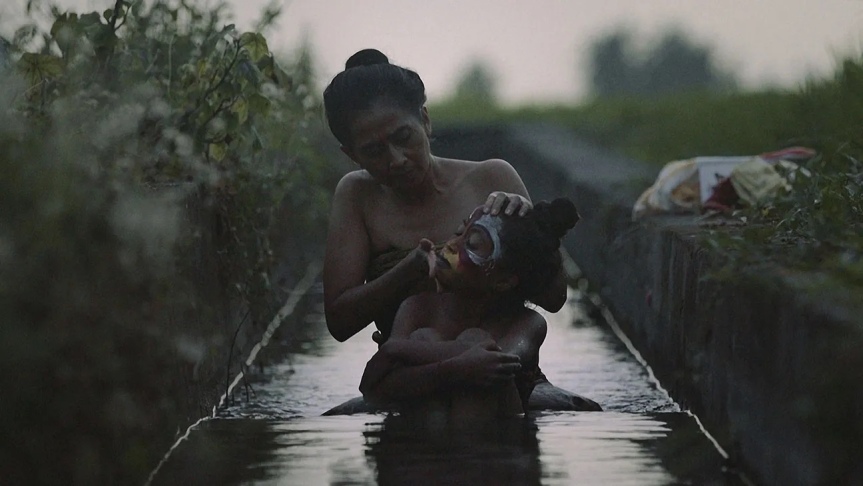The Big Continent: Asian Cinema Challenge
Week 4: Indonesia [Film 1 of 2]
For this week’s installment of The Big Continent: Asian Cinema Challenge, challengers are tasked to select, view, and critique films from the list of Indonesia. I chose a film not included in the list Kamila Andini’s The Seen and the Unseen (2017). It’s my first time watching this one.
The Seen and the Unseen (dir. Kamila Andini, Indonesia, 2017) – **** – Kamila Andini’s The Seen and the Unseen navigates the depths of a child’s subconscious, as seen through her cultural heritage. It recounts the story of fraternal twins, Tantri and Tantra. One fateful day, Tantra stole an egg from the gods’ altar, and Tantri subsequently prepared and consumed it. Tantri ingested the egg white, while Tantra consumed the yolk. Unexpectedly, Tantra collapsed and was rushed to the hospital, where doctors discovered a tumor in his brain. Tantri conjectured that the tumor resulted from consuming the yolk, interpreting it as divine retribution for disturbing the balance between the spiritual and human realms, as well as between man and nature.
The film offers a profound lesson about the inner world of a child, often perceived as simple and direct, is in fact intricate and mystical. It revisits the innocence of childhood, the off-beaten path, the path without the chains of representation, of the law.
Moreover, it challenges the conventions of adulthood, which often overlook or diminish cultural roots. The child characters gravitate towards the pre-linguistic and the non-representational. Tantri, for instance, is depicted walking at night and engaging with her comatose twin, the spirit of Tantra.
Furthermore, the film explores the boundaries between night and day, light and darkness, and the symbolic significance attached to them. The theme of duality permeates the narrative, embodied by the twins Tantra and Tantri, their preference for egg yolk over egg white, and the symbolic interplay of round shapes reminiscent of the sun and moon.
Andini utilizes cinematic space as a platform for the interplay between childish fantasies and the gravity of adult life. This spatial dimension significantly contributes to the film’s portrayal of indigenous consciousness, rendering it accessible to non-Indonesian audiences. Through gestures, masquerades, and a yearning for absence, Andini authentically captures elements of her culture, The generality of gestures, of masquerade, of longing for absence – Andini taps into pure expressions of her own culture, facilitating cross-cultural communication.
In its entirety, The Seen and the Unseen traverses the abstract terrain of pre-ontological Indonesian existence. It revitalizes cinema’s theoretical potential as a medium for exploring indigenous knowledge beyond the boundaries of language and the written word. By rediscovering cinematic expressions of rituals, dualism, and transformation, the film amplifies the discourse surrounding indigenous cultures, reshaping the language of cinema as a conduit for cultural understanding and appreciation.
###
Cross-posted in Film Police Reviews.


2 thoughts on “Film Review: The Seen and the Unseen (2017)”